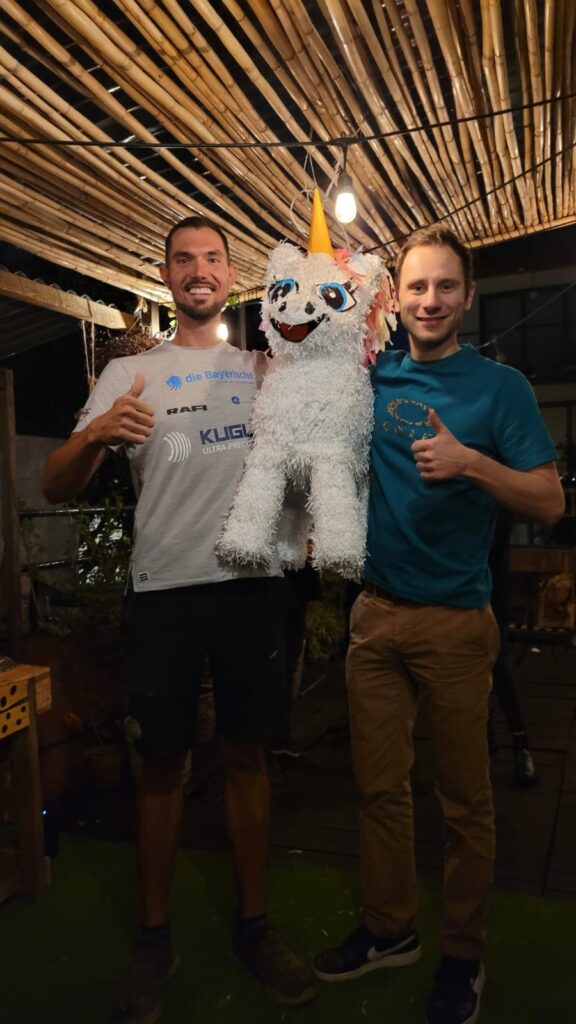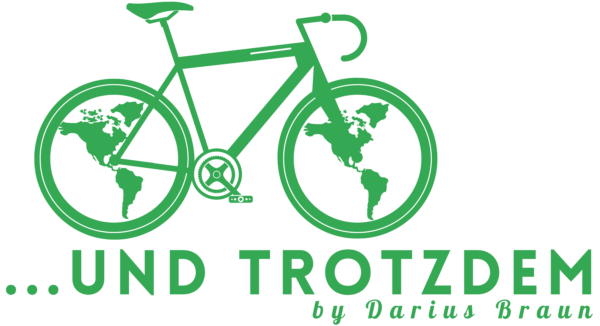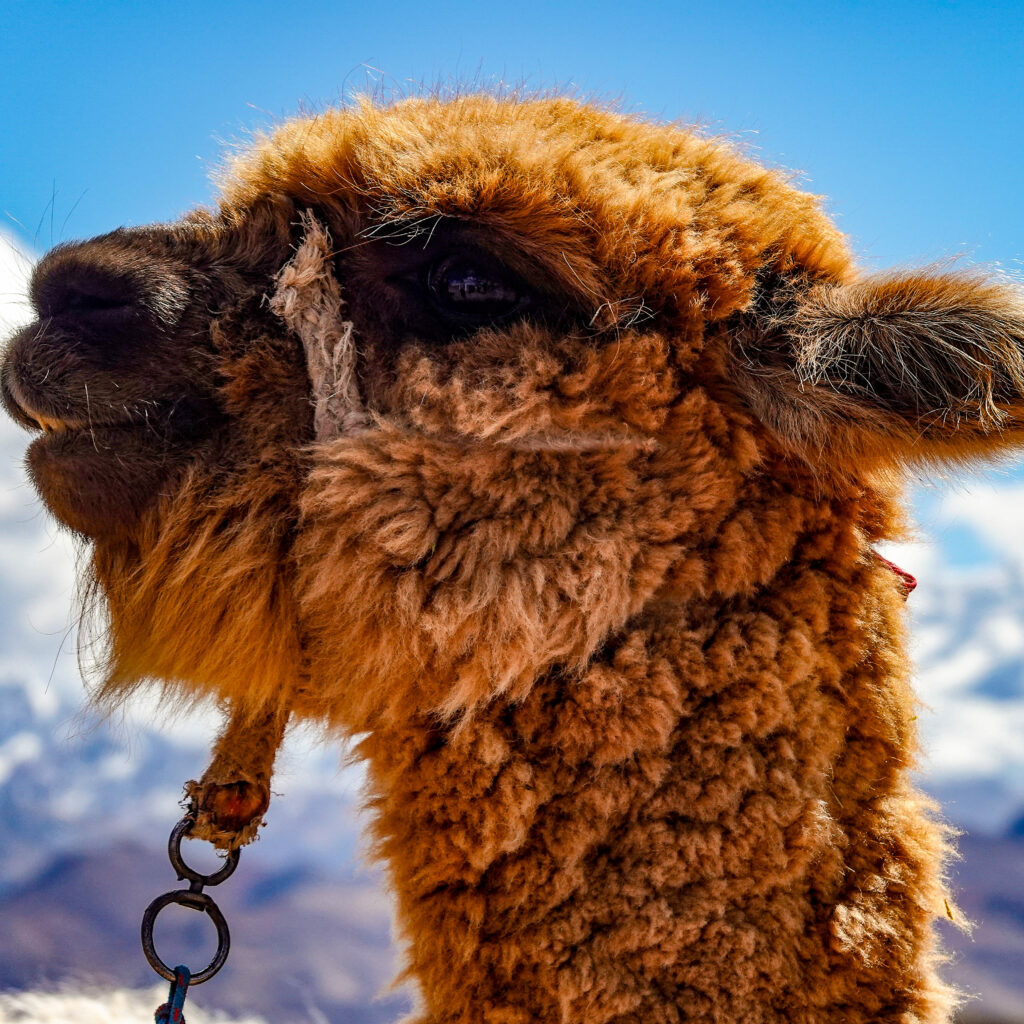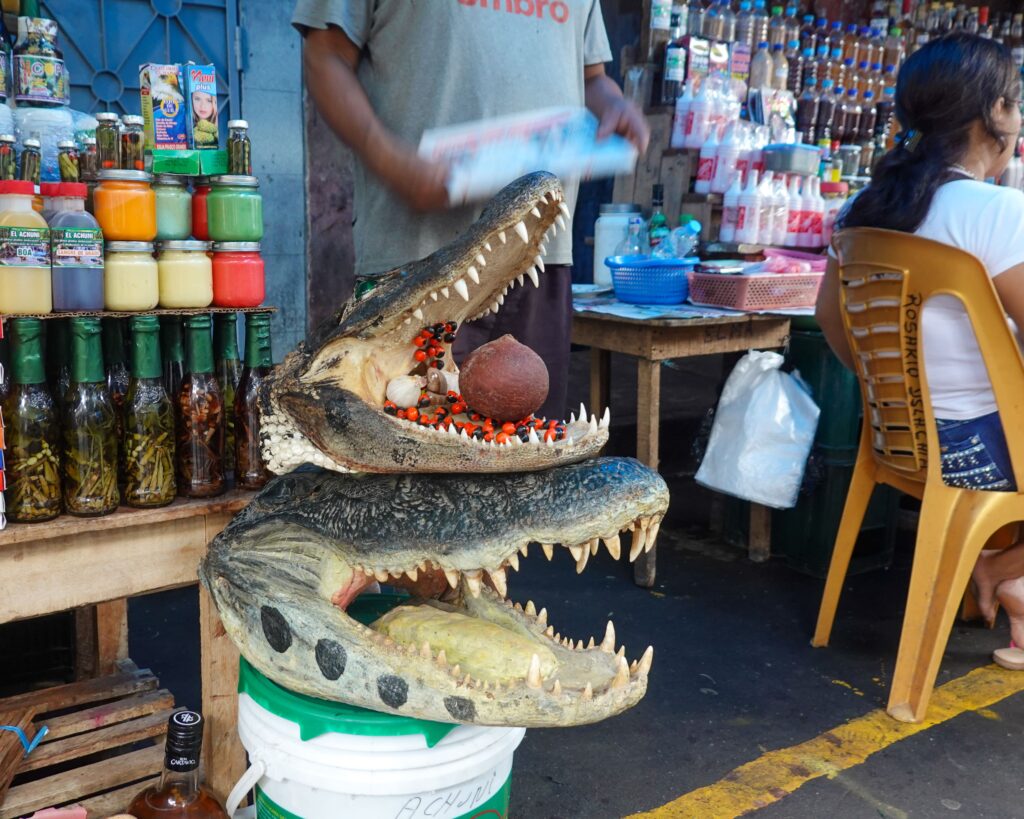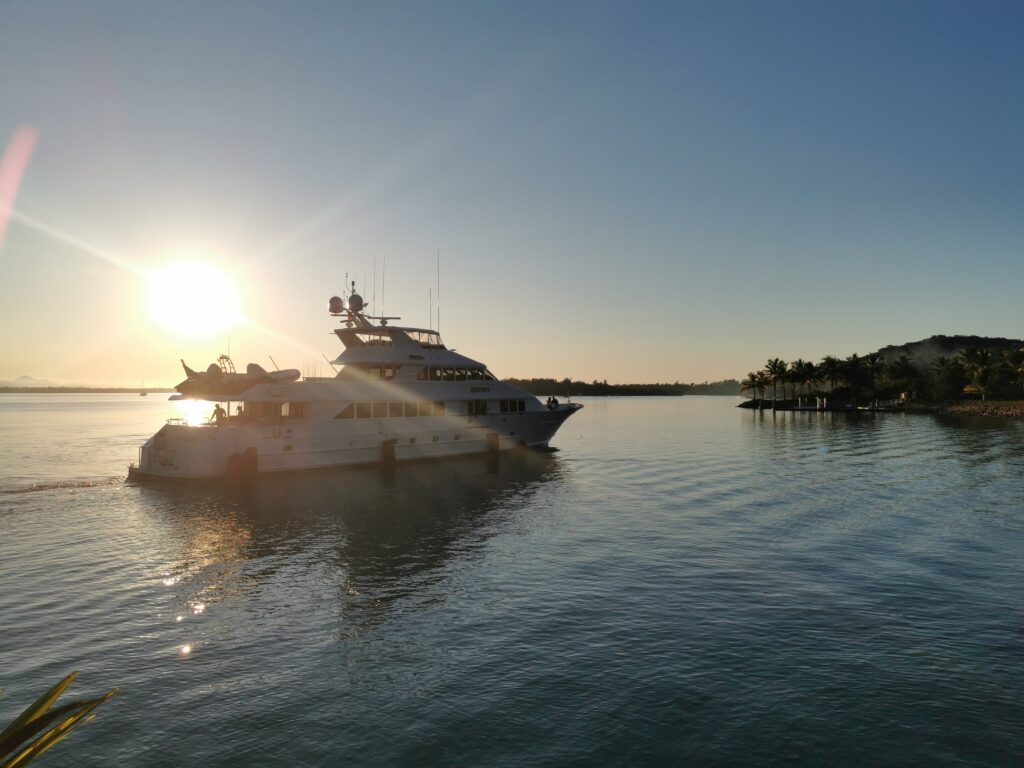
After 3 wonderful … I mean, but incredibly exhausting days on the Serenity, it went on for me to the Mexican mainland. After so much rest and relaxing days on the ship and in Barra de Navidad where I enjoyed the tropical beaches with the crew of Serenity and explored the surroundings with the stand up paddle board, cycling was again a change. But I was looking forward to the new and unknown and after a few kilometers I got back into my rhythm, had nice encounters with locals and was back in my flow.
Through the tropical heat it went through banana plantations first a piece along the coast. After a few kilometers my way led away from the coast into the interior and after a few hours I had already ridden over 1500 meters uphill. The climate was now no longer tropical muggy-hot and as soon as the sun went down, it quickly became fresh. However, the people became more and more open-minded and cordial. Sometimes I had to turn down invitations, because I had been invited for dinner only a few minutes before. I was given water, food or even money because the locals cared and did not want me to spend the night in my tent. People who had little shared what little they had with me.
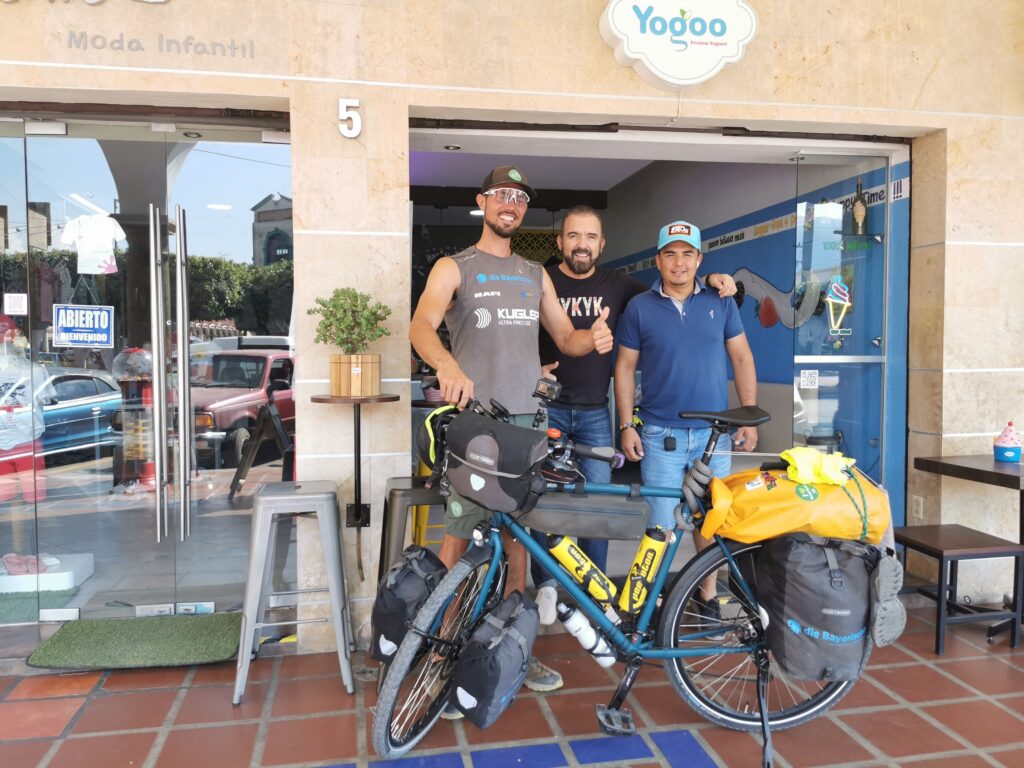
The first few days I drove much less than I had intended, but did not regret it at all, as I was able to experience such warm Mexican hospitality.
In Guadalajara I was allowed to stay for several days with Louis, a policeman, his mother (who treated me like her own grandson) and Louis’ husband Ricardo who had emigrated from the USA to Mexico. The beautiful old town of Guadalajara was on my agenda and also some appointments with the local media. After the somewhat disappointing feedback from the media or clinics in the US, I was not prepared for the gigantic media interest of Mexico. After my interview with Radio Formula Jalisco (Mexico’s second largest radio station after the capital), I was invited to Quiero TV for a live interview the next day. I rode my bike to the TV station a bit nervous and clueless, eager to see what was in store for me. Liborio one of the moderators with whom I was in contact, told me with the Mexican looseness, that it is quite sufficient if I come 5 minutes before the live and the rest will then arise. My German mentality of approaching appointments was somewhat overwhelmed by this. I had no idea what was coming. Still on the way to the television studio Liborio wrote me whether it would be possible that I could come with the bicycle and complete outfit to the interview. Now I was glad that I had already prepared everything so far. Because here I would have reached my limits with the flexible Mexican way.
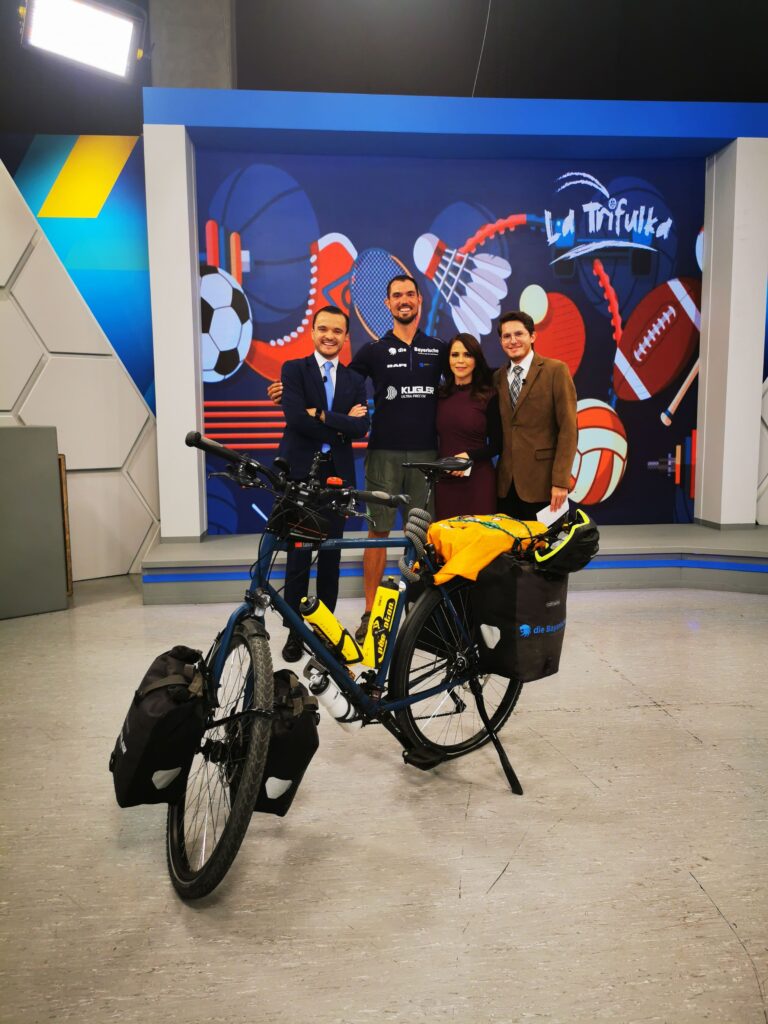
Arriving at the TV studio, I then stood somewhat helplessly between all the cameramen in full gear and watched as Liborio and his colleague interviewed a well-known designer. When I asked when it would be my turn, no one really seemed to know when it would be my turn, let alone when there would be a time slot for me. So I was allowed to continue to be flexible and be surprised. A minute before my interview was to start, a young moderator came to greet me very nicely and translate the interview. Then I was given a microphone and told to be ready because they would have another interview right after that. I had no idea what exactly was coming up, just hoped that I would get enough time so that I could get my actual message of my tour across. Finally, I was asked to come on stage and I ended up having a 15 minute live interview. Even after the cameras were turned off, I chatted with the presenters longer because the scheduled follow-up interview fell through and so my story took precedence .
Here you can see the interview: https://www.youtube.com/watch?v=n0Tmka9xXDk&t=551s
In the end, I was really proud that my first big TV interview and then in a foreign language went so well and was very well received. I was also happy that my story and the topic of cancer were given so much importance.
In addition to the media appointments, I also had a wonderful encounter that touched me very much.
On the way to my TV appointment, I met an older man who was very interested in what I was going to do with my packed bicycle. I told him about my tour and about my story.
The man stared at me and his eyes became more and more glassy until some tears escaped him. In a strained voice, he told me about his wife, who had died of cancer a few years earlier. As he told his story, he became more and more emotional and finally collapsed on his knees. Then he stood up, looked me in the eye for what felt like minutes, and finally hugged me. He told me that he was so touched and grateful for our meeting, so that in the end I also had tears.
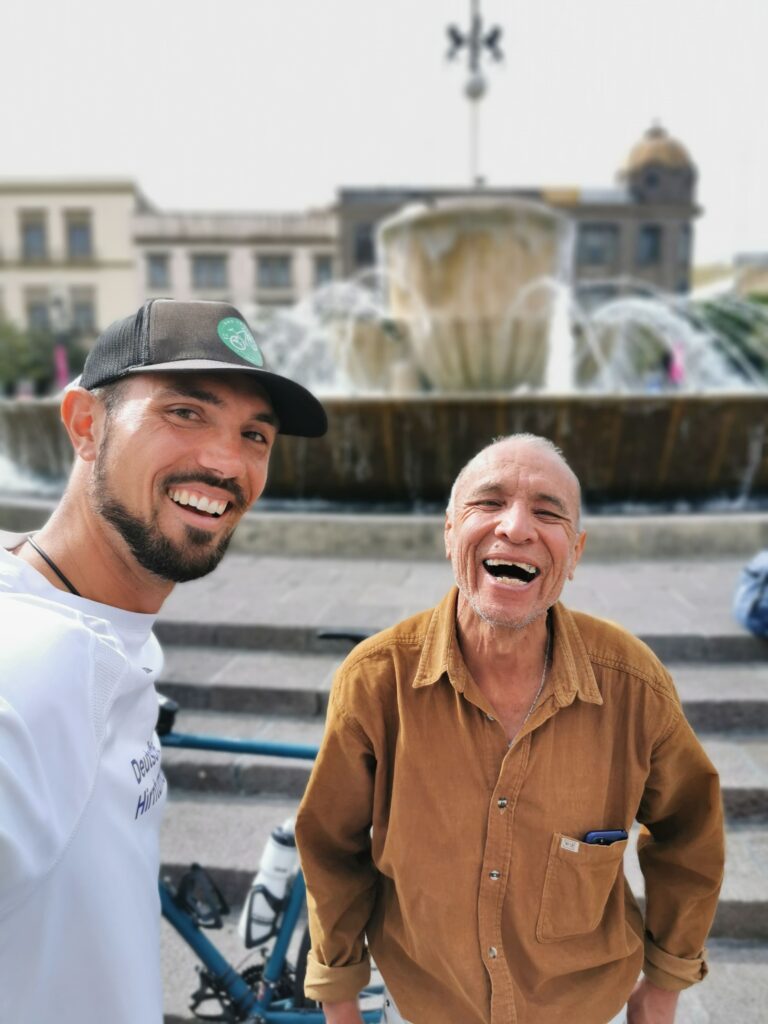
When someone asks me why I am doing this tour and sharing my story with the public, it is exactly for this reason! Only a few years ago, I would never have thought it possible to give courage and hope to so many people through my story. The fact that people are moved to tears and visibly emerge from our conversations with a huge glow and full of confidence touches me and makes me very happy!
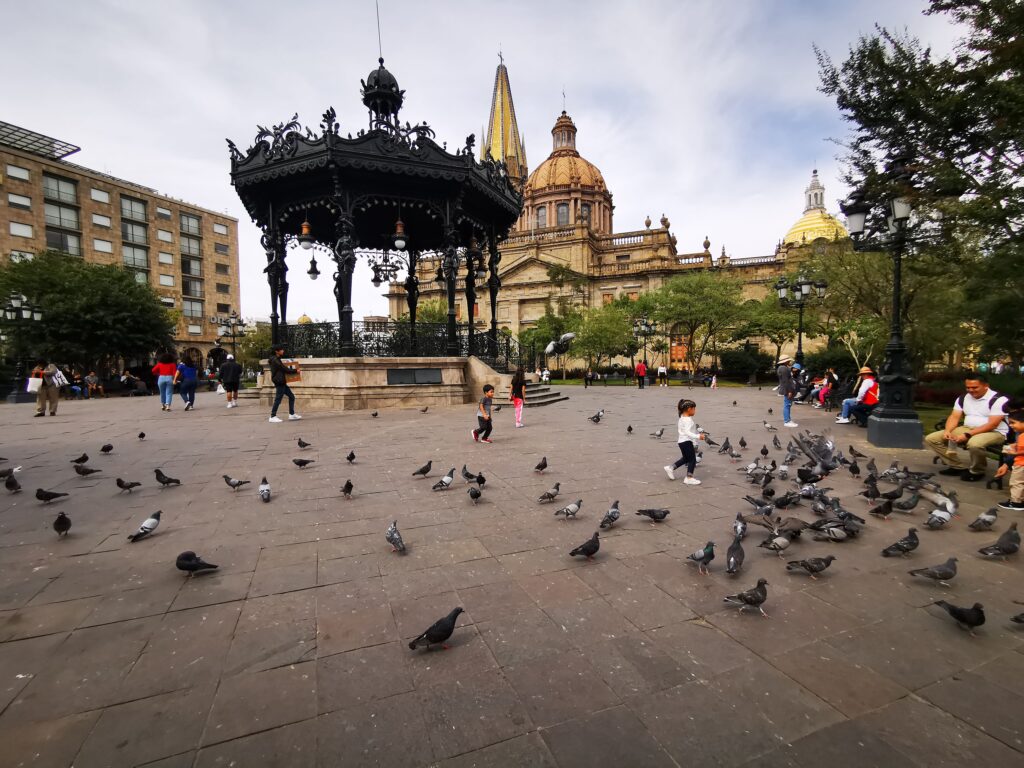
After wonderful days in Guadalajara, it was time to say goodbye to Luis and his family and continue my tour. It went out of the city to Lago de Chapala, the largest lake in Mexico. The drive out of the city of 6 million people was terrible and extremely stressful. I have rarely ranted as much as I did that day. On such days I can really curse cycling. In the evening, the sunset over the lake compensated me for the stress of the day.
Unfortunately, I have not thought early about a suitable place to sleep, so I had to look for a campsite in the middle of the darkness. Since everything there is private property, all meadows at the lake were fenced off. At some point I just wanted to pitch my tent somewhere. I also felt uncomfortable with the thought of driving alone through the dark. I arrived at a fenced off meadow far away from houses, opened the fence awkwardly and closed it again behind me, hoping that nobody would notice that I had broken in here.
In order to remain as unnoticed as possible, I tried not to use my headlamp despite absolute darkness. All of a sudden I noticed noises around me, but I couldn’t place what it was. So I decided to turn on my headlamp for a moment and realized that I was standing in the middle of a cow pasture. I shone the light a little longer as a man on a horse rode out of the darkness toward me. Rifle in hand, he looked at me rather grimly. My heart slipped and the few bits of Spanish I had learned so far wouldn’t come back to me.
With the help of the Google translator I apologized several times and explained to him that I had only entered because it was too dangerous for me in the dark and I wanted to find a safe place to sleep. This seemed conclusive to the man and he said that it was indeed very dangerous in this corner and that I was exceptionally allowed to pitch my tent in his pasture. Phew! Once again all went well!
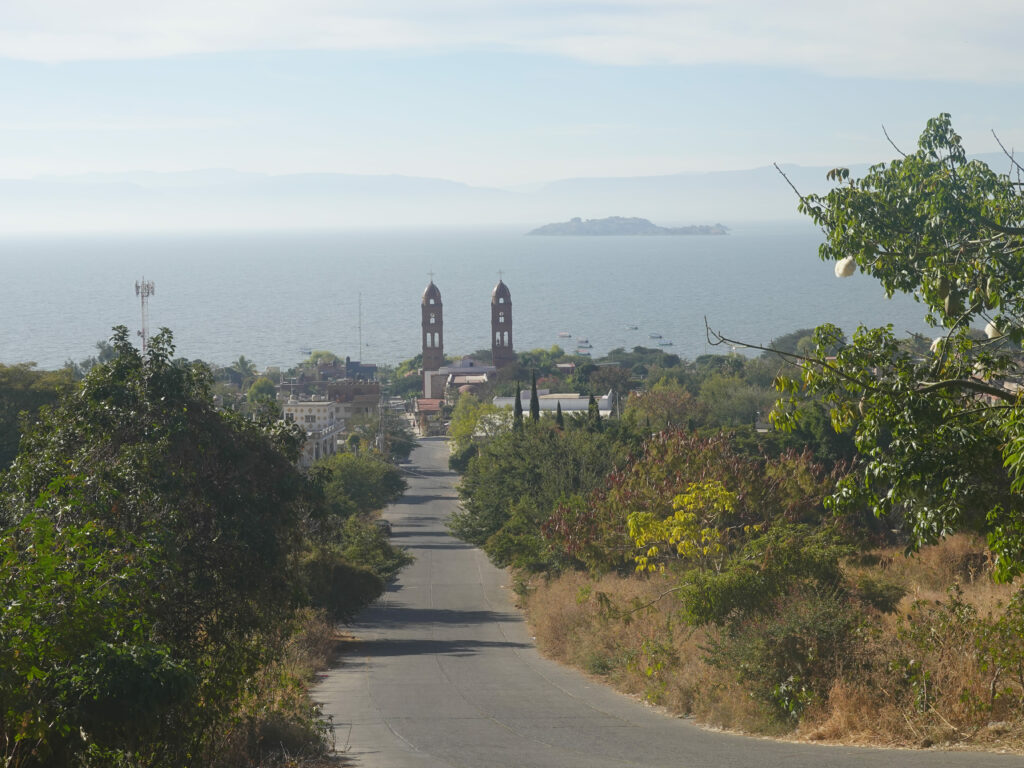
The next morning I set off with the sunrise and drove on small paths along the Lago de Chapala. It went through poor farming settlements where donkeys were still kept as the standard means of locomotion and load transport. Few probably had the money for a motorcycle or a pick up truck. This was Mexico as I had imagined it from the old days. People were out on the street in front of their houses waving at me and children were trying to race me on their bikes.
That day I also met a French family who were riding their bikes through Mexico and Central America with their three children (ages 12, 10 and 5). The youngest daughter was pedaling along diligently, attached to her father’s bike. I found it quite impressive how the family mastered this and with what enthusiasm the children were on the road.
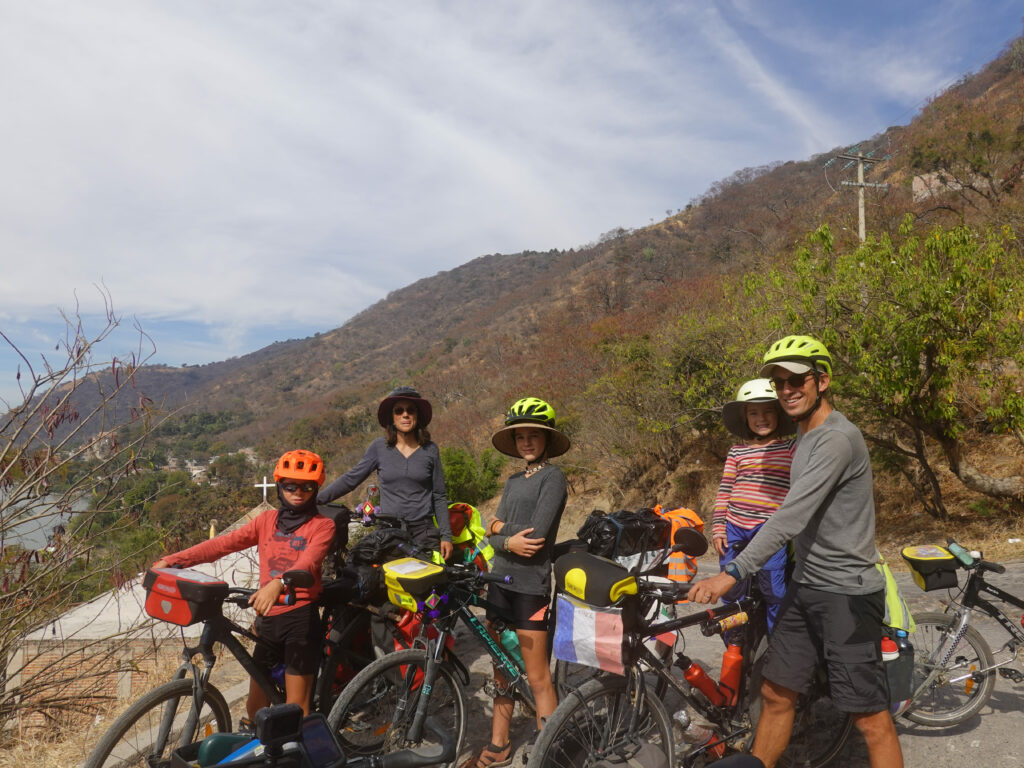
To avoid the traffic chaos of Mexico City, I decided to take the bus into the city, which turned out to be a good decision. At the end of the day, the tour is supposed to be fun and I want to arrive safely at the next place.
Mexico City, or as it is called in Spanish Ciudad de Mexico, was for me one of the most fascinating cities I have visited so far. Not only the enormous size of almost 23 million inhabitants alone makes Mexico City the largest city of both American continents. The city has such diversity, history, and internationality that one never gets bored. In addition, I found the city to be relatively clean and orderly. Although I’m not a big fan of big cities, I didn’t feel overwhelmed by the crowds here. And believe it or not, the city is even quite bikeable.
In Mexico City I was met by Antonio, whom I had gotten to know through the clinic Oncotec, during the time in La Paz. Antonio showed me around the center, showed me the historic buildings and gave me a private tour of the Franz Mayer Museum, where he had worked a few years ago. For me, the Plaza de la Concitutión, or Zócalo for short in colloquial language, was particularly impressive. This is where the opening scene for the James Bond film “Spectre” was shot in 2015.
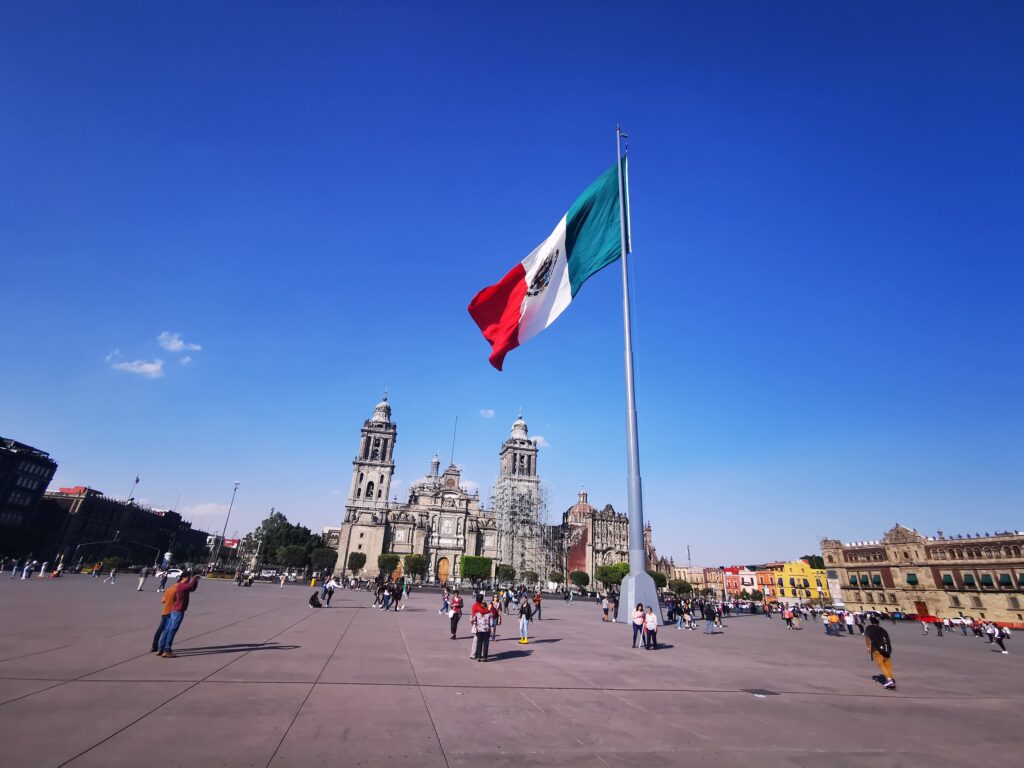
In addition to the city tour, Antonio also accompanied me to a hostel for cancer patients. These albergues are mostly privately run and are largely financed by donations. They are for people who lack the financial means for expensive cancer treatment. People from all over Mexico come to these Albergues and are able to stay and be cared for during their treatment. Far more important, however, is that they can exchange ideas with other patients who have a similar fate, and find support and a community. Rafael, the man with me in the photo, had a hair salon until his first surgery, but he had to close it because of his condition. He probably doesn’t have more than a year to live. A week after my visit to the Albergue, I received the news that Rafael’s leg had to be removed because of the cancer. However, I hope that he is doing well, considering the circumstances.
But there was no sign of sadness or giving up in him at the time of my visit. Of course, some patients who are currently receiving therapy and are incredibly weakened due to surgeries and medications are shaken and devastated. However, the patients told me that this place helps them in their recovery and they are all incredibly grateful. Because this space and the community gives them an incredible amount of support. They are grateful to be alive and want to make the most of each day as they can. Rafael told me that he doesn’t worry about what will happen a year from now. As long as he has the energy, he tries to contribute at the hostel and do his best every day.
I am grateful for the opportunity to have this insight and to learn from the people there and to be infected by their energy.
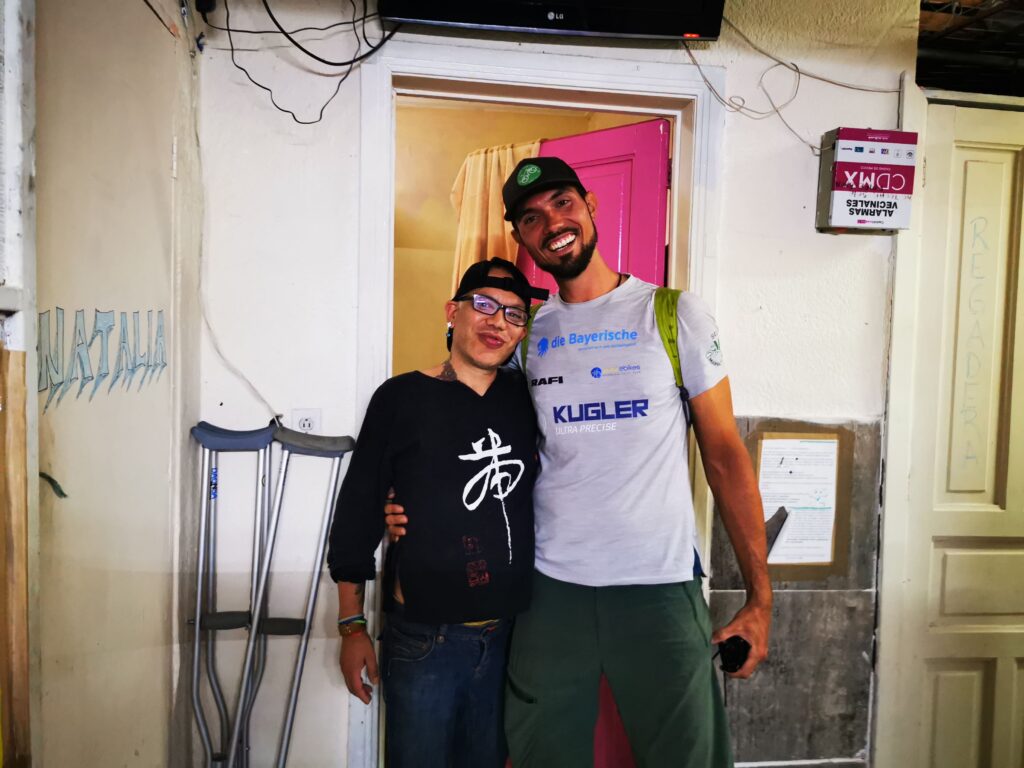
I spent the week in Mexico City with Marco Lopategui. He is a very good friend of Antonio and a professor of international cooperation at the National Autonomous University of Mexico. Future diplomats and politicians attend his lectures. In addition, Marco, is probably the best connected person I know.
My personal highlight was that I got to give a motivational talk to Marco’s students. Marco took me to the university and let me give the kick-off event of the new semester. Although it was quite spontaneous and I had only taken a few notes, it was a complete success and I had an incredible amount of fun. Above all, I was delighted to see the impact my presentation had on the students.
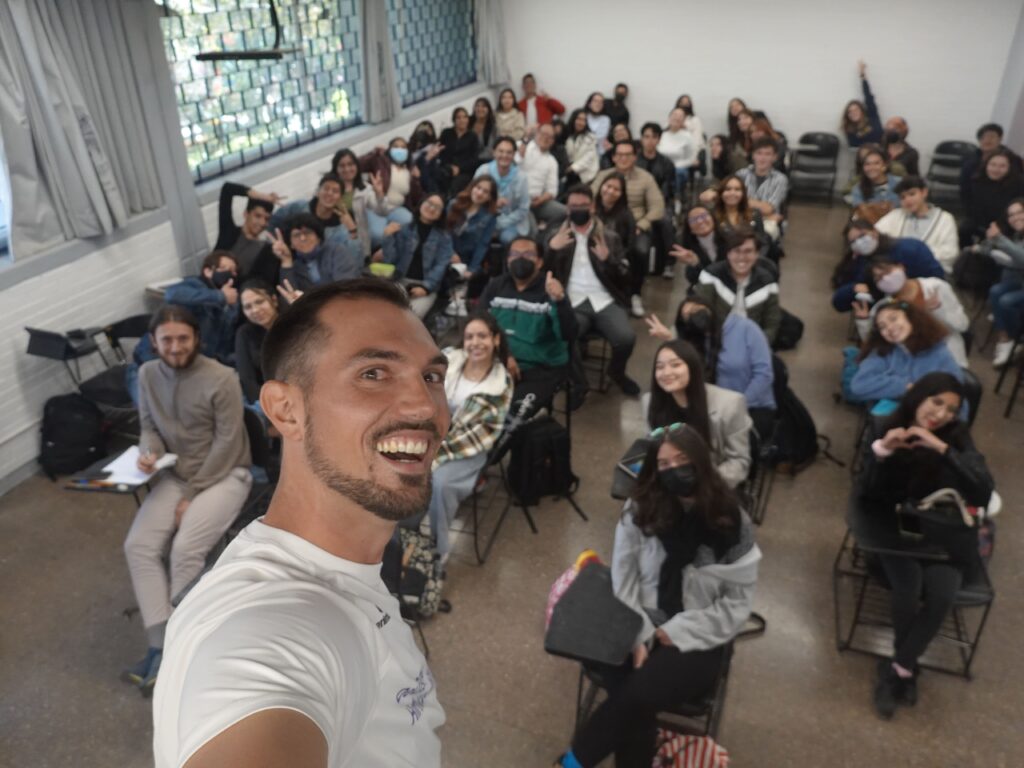
Another highlight was definitely the TV Azteca television interview, which was aired two days later on Mexico’s National News.
YouTube link: https://www.youtube.com/watch?v=_bjtZib5h2Y
On my second to last night in Mexico City, I was invited to a birthday party. Jonas, whom I first met through a mutual friend from Germany at his birthday party, welcomed me like a longtime friend. The crowning event was the infamous piñata smashing, where a papier-mâché horse filled with candy, the piñata, is destroyed until all the candy falls out.
